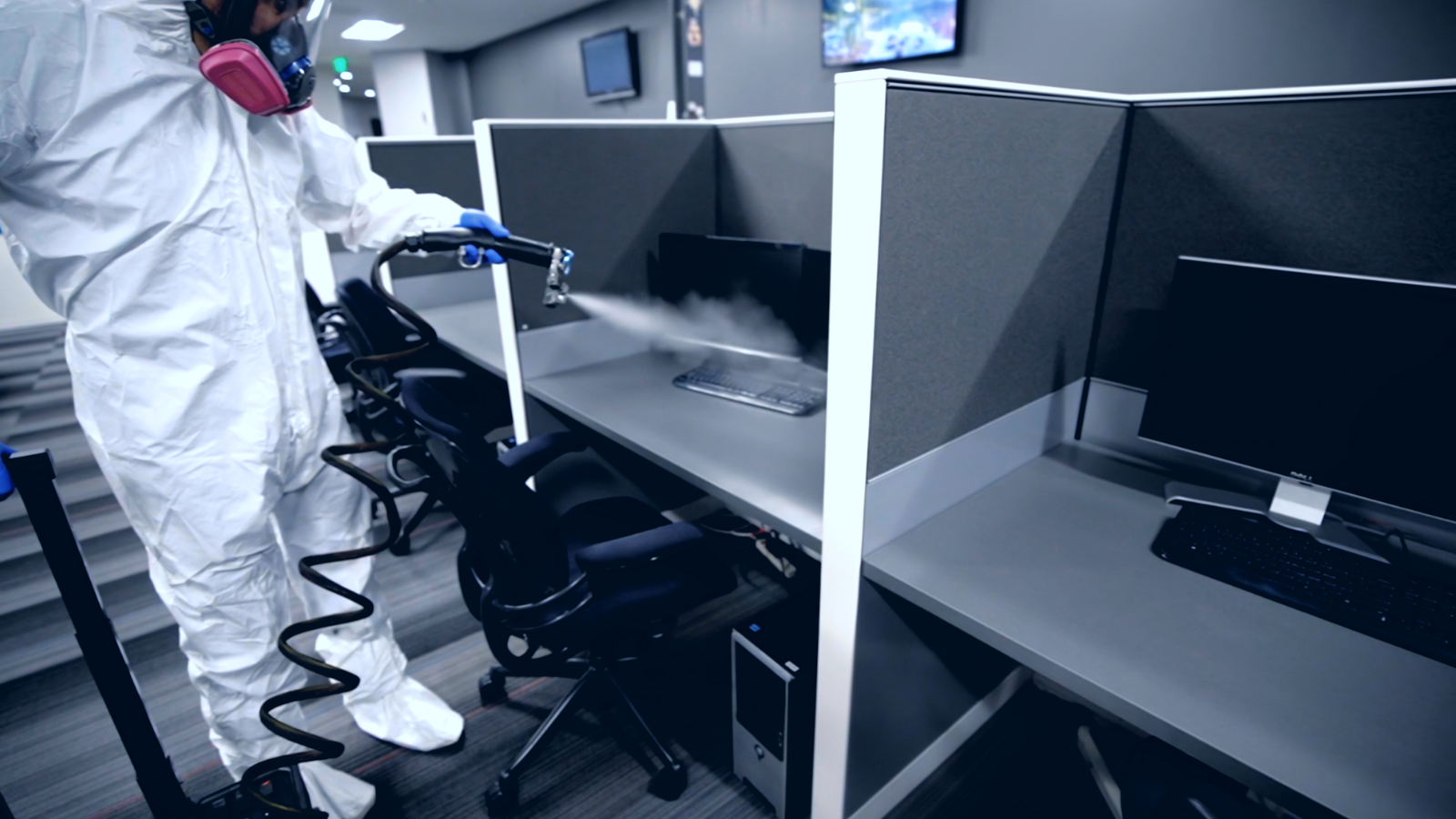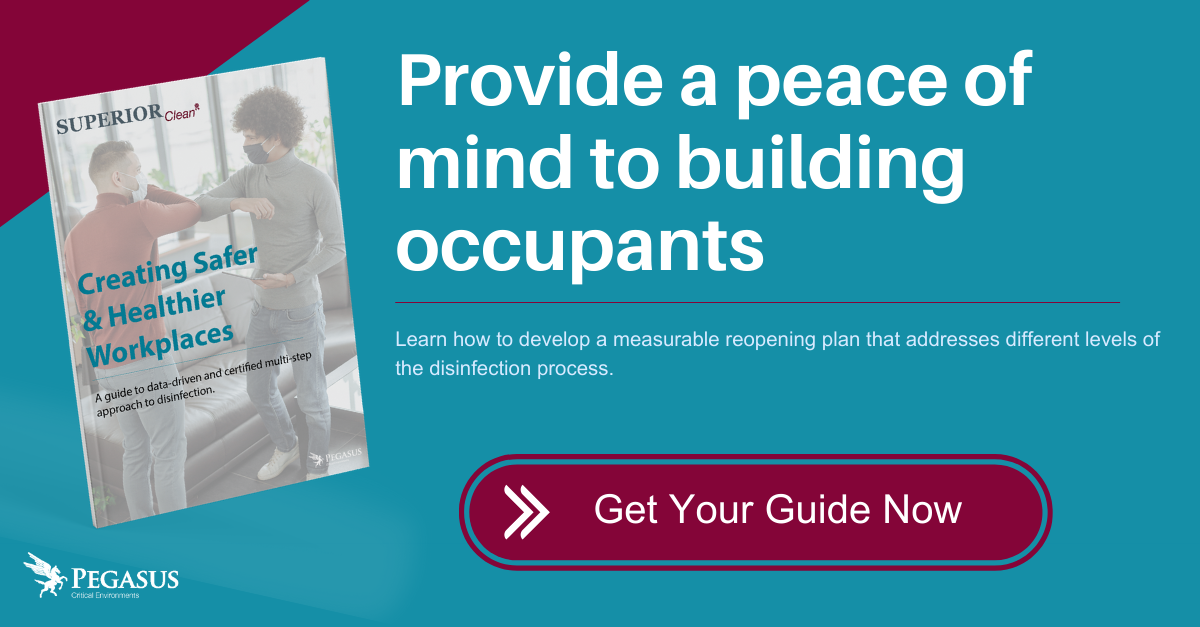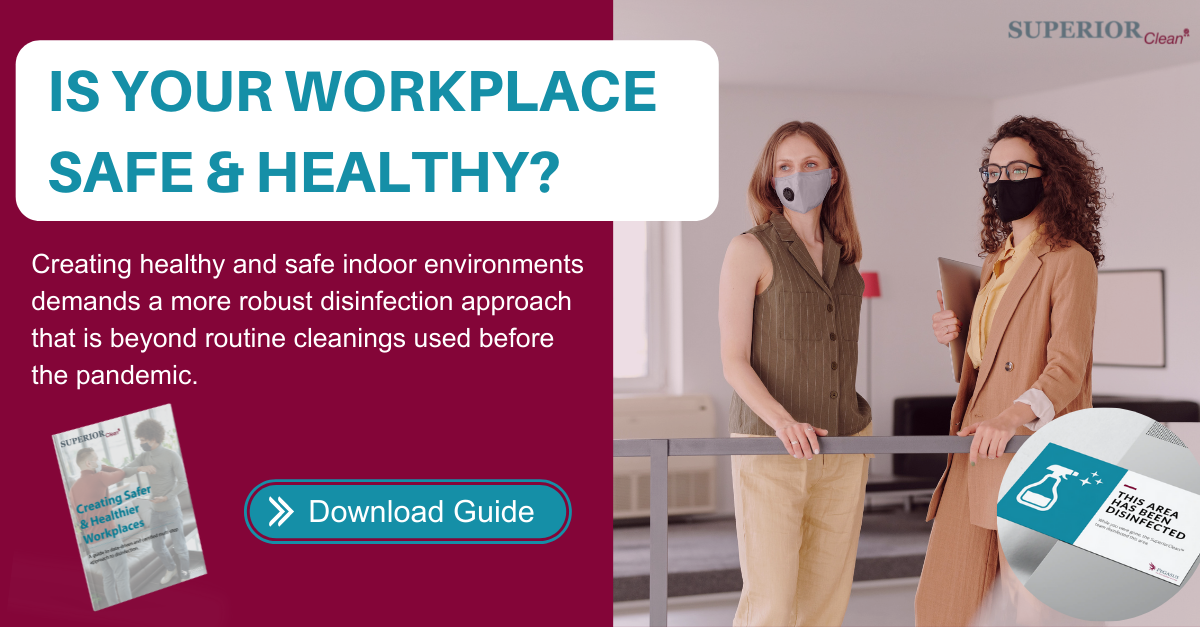The concept of a Hybrid Workplace is soaring in popularity thanks to its flexibility, convenience, and health and safety benefits. The 2020 Remote Employee Experience Index, an international survey conducted with over 9,000 skilled office workers, found that a staggering 63% of employees prefer a hybrid workplace. This shift to the hybrid workspace model requires changes in how traditional office spaces are managed and maintained.
To thrive in the post-pandemic world, employers must create a clean, fresh-air environment where the employees feel safe, happy, and productive. Maintaining strict sanitization protocols and social distancing in the shared workspace is absolutely crucial. Some employees may have assigned desks in your hybrid workplace, while others share or switch desks with other colleagues.
Hybrid workspace cleaning best practices
Hybrid and co-working spaces can quickly become breeding grounds for germs without proper cleaning routines. Here are the seven fundamental principles you should follow to create safe and healthy hybrid workspaces:
Minimize face-to-face meetings
The first and most obvious step is to minimize face-to-face sessions. This is a basic preventive measure that should reflect in your organization’s workspace guidelines. It significantly lowers the possibility of infection by any form of airborne particles or droplets. If face-to-face discussions cannot be avoided, ensure that all participants are wearing face masks at all times.
Reduce human-to-human contact
Employees huddled together in break rooms, or conference halls defeats the purpose of social distancing requirements. Even though the workers might want to enjoy social interactions and collaborate in person like before, it is necessary to follow all health and safety precautions. It is the management’s responsibility to ensure that occupational safety and health policies are respected.
Minimize the need to touch anything
In a shared workspace, it is quite common to use a pen, clip, or charger without knowing who it belongs to. As part of the new co-working guidelines, even this minor contact needs to be minimized. Frequently handled surfaces like door handles and switches can accumulate many germs throughout the day. If possible, stop their use completely or sanitize the surfaces after every touch.
Measure people’s temperature
The most common symptom of an infection is a fever or slightly elevated temperature. Use this to your advantage and do a preliminary check by measuring people’s temperature before they enter the office. Invest in non-contact temperature assessment devices for the added safety of your security staff.
Guide and educate people
This is perhaps the most crucial action an employer can take. Health and safety in the workplace ultimately depend on the people. A comprehensive safety policy is useless if the employees aren’t aware of it or don’t follow it. In fact, the IBM Institute for Business Value study found that 78% of workers want their employers to clearly communicate plans for ensuring sanitary conditions in the physical workspace.
Clean and decontaminate
Employers must be proactive about cleaning and sanitization procedures in a hybrid workspace. From wiping down surfaces with bleach or alcohol-based solutions to keeping the HVAC system in perfect health — maintaining a hygienic environment is a large-scale project. You might also want to switch out some items and equipment for easier cleaning and disinfecting.
Track people count and movements
Keep a log of movements in the shared workspace. This could mean having a record of people’s entry and exit times or a count of people using the same “hot” desk. This will help you understand the logistics of workspace management and make it easier to trace contact in the (unlikely) event of an infection.
Hybrid workspace dos and don’ts
Dos:
- Maintain a sizable stock of hand sanitizers, disinfectant sprays, and masks.
- Encourage employees to clean their cell phones daily. Picking up and moving other people’s cell phones can be quite spontaneous in a shared and collaborative workspace.
- Reconsider the geometry of the space to increase the distance between workstations.
- Deploy hands-free technologies for frequently used items like switches and water taps.
- Consider employing professionals like Pegasus, who employ a multi-level disinfection program.
Don’ts:
- Do not let workers leave their personal belongings behind. Employees should eliminate empty coffee cups or water bottles and clear their entire workstations.
- Get rid of upholstery and fabrics that are difficult to wipe down and sanitize.
- Do not use chemical-based disinfectants on monitors, keyboards, or other devices that a harsh cleaning agent can damage.
- Do not rely on top-level policy changes alone. Communicate your expectations and safeguards with frequent emails, notices, and signage around the workplace.
Should you be cleaning your hybrid workspace frequently?
Absolutely. A safe and sanitized workspace is the cornerstone of the hybrid work model. In addition to implementing daily cleaning practices, you will also need to deep clean your workplace from time to time. With so many industry regulations to follow and different types of surfaces to disinfect, getting professional help is your best bet for maintaining a clean, healthy, and safe indoor environment. Pegasus leads the way in comprehensive cleaning and maintenance solutions and is here to help you and your employees have peace of mind in your hybrid workspaces.
Take the first step today by downloading our guide to Creating Safer and Healthier Workspaces.







